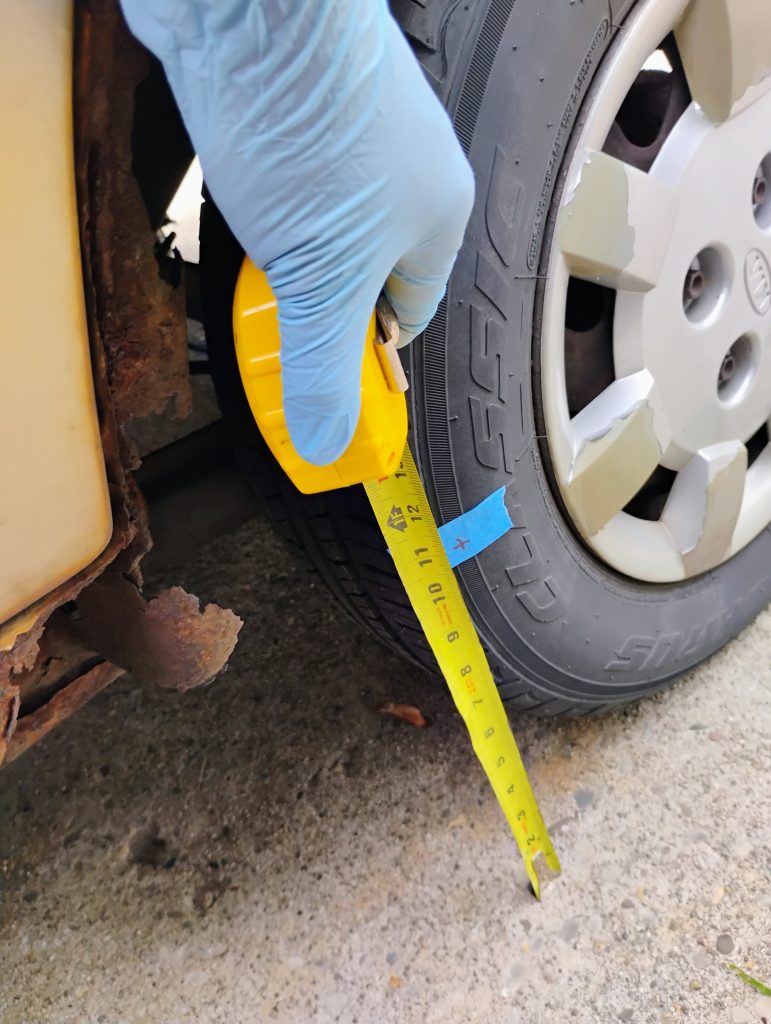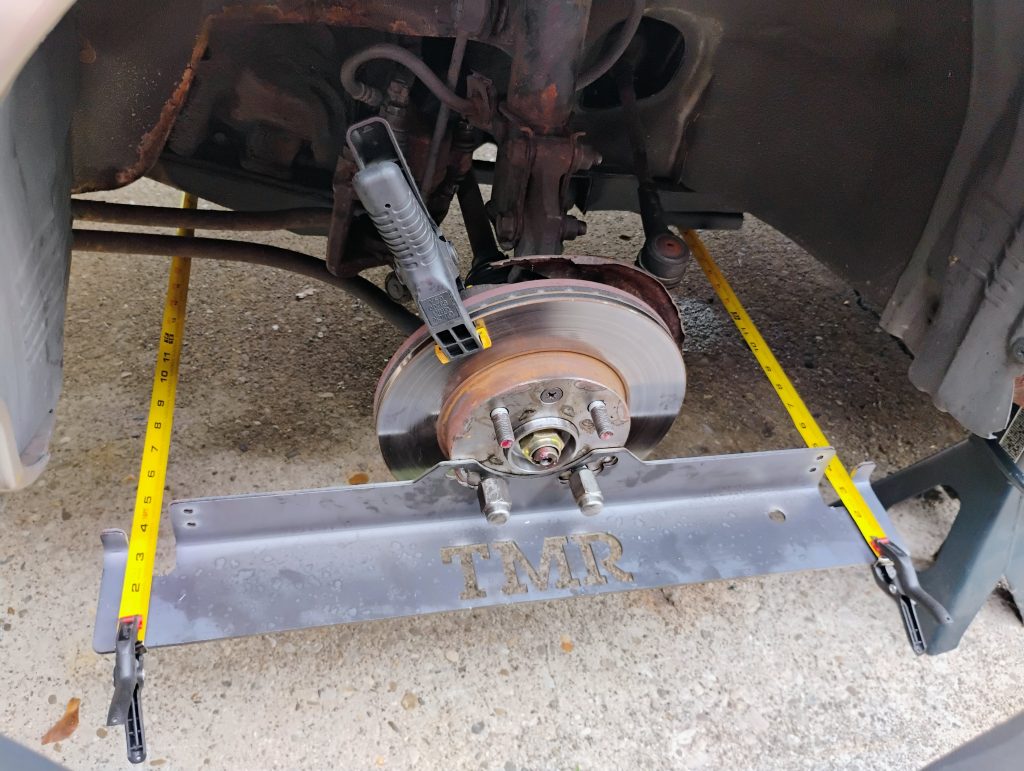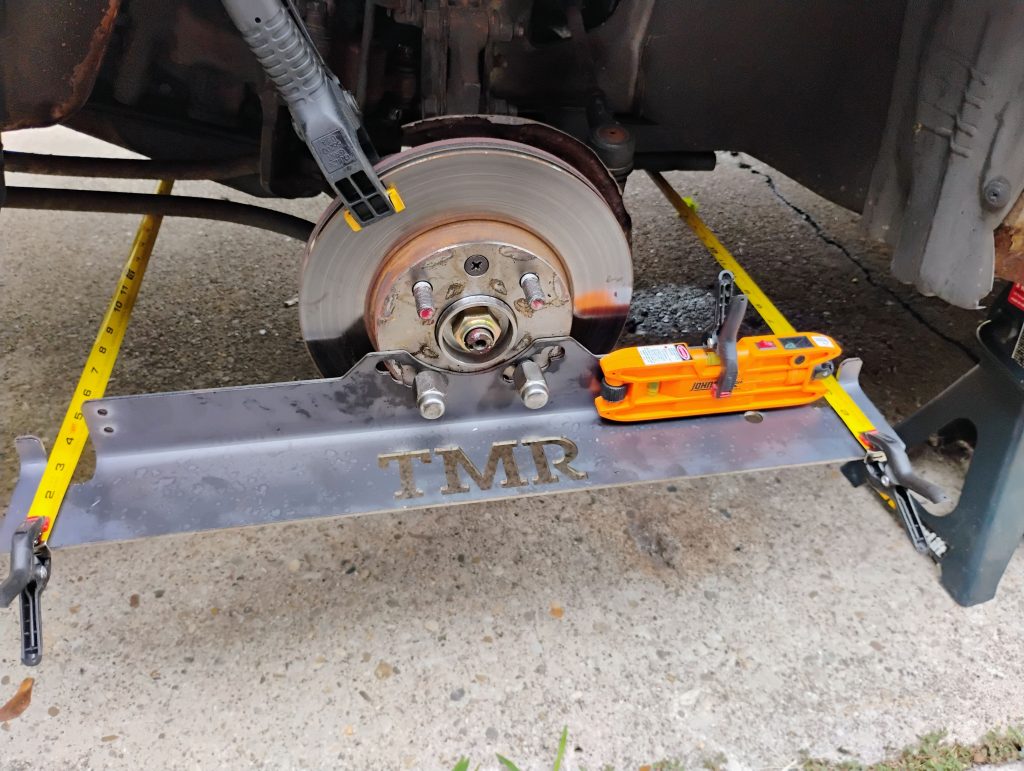Wheel alignment might seem mysterious at first, but it’s actually quite straightforward. I started with a cheap set of toe alignment plates from eBay, but they turned out to be unreliable – too many variables made consistent measurements difficult. Eventually, I upgraded to a set of TMR alignment plates. They’re solid, accurate, made in the USA, and bolt directly to the wheel hub.
Since they mount to the hub, setup takes a bit more effort. The wheels must be removed, and in my case, the brake calipers too, to make room for the plates.
Nevertheles, there were a couple of practical hurdles:
- Keeping the hubs stationary: The transmission must be in neutral; otherwise, rotating one hub forces the opposite wheel to turn the other way, knocking the plates out of parallel. Even in neutral, I had to secure one wheel with a spring clamp so it stays put while I worked on the other.
- Clearing obstructions for the tape: Under-body components can block a straight run for the measuring tape once the plates are squared up. I had to tilt both plates just enough to clear the obstacles, then match their angles with a bubble level propped against a scrap-plastic shim.
Start by setting the steering wheel to its true neutral position – perfectly level and centered.
- Align using a laser: Clamp a laser level to the alignment plate, ensuring it is perfectly parallel to the plate’s sidewall and aimed at the rear wheel. Attach a tape to each rear wheel at a consistent height from the ground – 11″ in my case. Use a tire groove as a visual reference point. Adjust the tie rods so that the laser beam hits the same position on both rear-wheel tapes. This ensures the front wheels have the same relative angle to the rear on both sides of the vehicle.
- Set toe angle: Measure the toe. Adjust the tie rods slightly to create a small toe-in (negative toe), moving the laser dots outward equally on both sides. If the toe is already too negative, adjust inward. Continue until the desired toe is achieved with the beam hitting the rear tire at the same distance from the rim on both sides of the vehicle.


- Test and fine-tune: Take the car for a test drive. If it tracks straight with hands off and the steering wheel remains level, then we’re done. If it pulls to one side, check tire pressures first. If they’re correct, make equal, minor adjustments to both tie rods – either turning both wheels slightly left or right – until the car drives straight. This step can be done without removing the wheels: lift the car enough to access the tie rods behind the front wheels. In some cases, it may be necessary to slightly revise the toe angle to get the vehicle to track perfectly straight. That’s acceptable – as long as the adjustment is minimal and within reasonable limits.


Leave a Reply